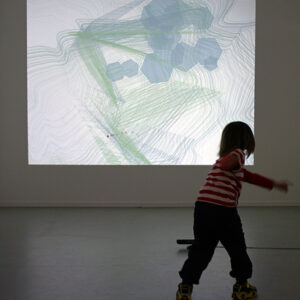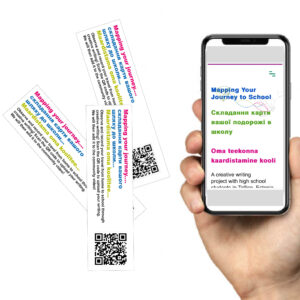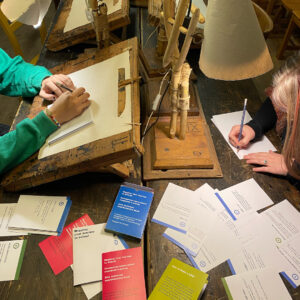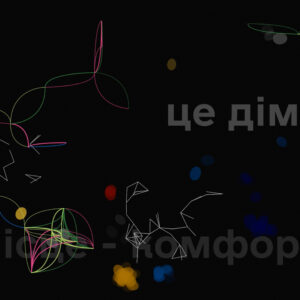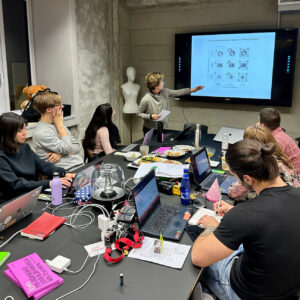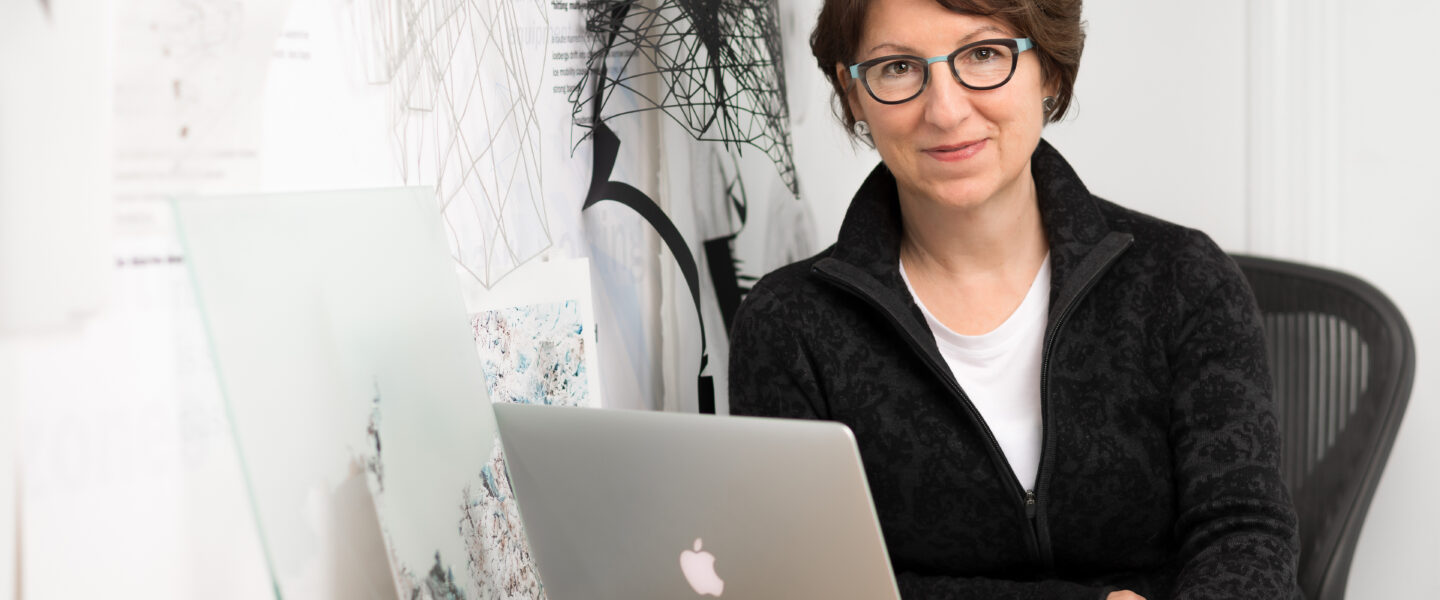
Andrea Wollensak
Name: Andrea Wollensak
Position: Fulbright Scholar
Relation to EKA: Visiting Faculty and Researcher in the Design Department, Fall Semester 2023
Andrea Wollensak is a designer and educator based in Mystic, Connecticut and Professor of Art at Connecticut College. Her work explores design for social impact through place-based public narratives and site-specific installation works for civic participation. Her work has been supported by awards and grants including Rockefeller Foundation, International Artists Studio Program in Sweden, and the National Science Foundation.
What projects are you currently working on?
During the fall semester I team-taught with Taavi Aher in the BA Service Design course where we worked with the Estonian National Library (RaRa) on service innovation with selected user groups. I also team-taught with Tanel Kärp in the IxD.ma Social Innovation course where we partnered with the Estonian Refugee Council (ERC) and focused on supporting the integration of young Ukrainian war refugees in Estonia. It was a great experience to team-teach, and I was very impressed with the level of student research, development and innovative solutions in both courses!
In addition to these courses, I advised master’s students on their degree projects in the Interaction Design MA program at EKA. I was also fortunate to connect with the new EKA Social Design master’s students to whom I presented a lecture on creativity.
I’m working on my Fulbright research “Creative Integration Strategies: Strengthening Community Through Digital Storytelling,” which is connected to teaching and research in the EKA Social Innovation master’s course. From this research, I’ve created a social design project, “Mapping Your Journey to School,” which engages local high school students at the Vabaduse Kool, Tõnismäe Riigigümnaasium, and the Ukrainian Cultural Center in creative writing workshops. The student writing is visualized in a generative video composed in the Ukrainian, Estonian, and English languages. The video can be viewed on the project website and will be broadcast in the high schools during the spring semester.
The “Mapping” theme encourages students to focus on their physical location and movement from home to school through poetry. The goal of the project is to bring students together through creative writing workshops in a shared and expressive process that finds common ground and encourages a stronger community.
For me, creative writing is a way to encourage youth to observe and reflect on their experiences in a thoughtful and distilled manner. I have found that poetry helps young people to connect with ideas and provides a process to deepen comprehension and develop empathy.
For the facilitators of the creative writing workshops at the ERC and the Vabaduse Kool, I’ve co-created a tool kit with poet and translator Katja Novak that introduces 14 writing prompts. One of the prompts invites students to write a haiku poem in Estonian which has a different syllable rule of 4/6/4 instead of the traditional 5/7/5. I also met with Estonian poet Doris Kareva and we collaborated on a video of one of her poems. She really inspired me to further develop poetic directions in the project.
What are other projects you’ve worked on that give us a sense of your interests?
My research focuses on social design and place-based storytelling, where I employ collaboration and innovative digital tools to amplify community voices in a shared space. In addition to working with local communities, I often collaborate with poets, scientists, and programmers.
In 2022 I had a year-long artist residency at the Anchorage Museum in Alaska where I collaborated with two Alaskan poets, Jen Stever and Erin Hollowell, on a social design project Water Stories: Visual Poetics and Collective Voices. This project encouraged community facilitation and brought together youth to share what water means to them. The work included a video installation projected nightly on the front of the museum, live poetry readings with audio-reactive video, and a digital audio composition broadcast on OutNorth radio and available on SoundCloud.
I am a professor of art at Connecticut College where I teach a wide range of design courses where students co-create with local community partners. I’m also an associate fellow in the Ammerman Center for Arts and Technology at Connecticut College where I was center director from 2014-2020. Outside of the college, I’m on the advisory board for Digital Media Connecticut, a collaborative of higher education institutions dedicated to supporting students in design and digital media, and a member of the Winterhouse House Institute Advisory Council, a national community of design educators committed to promoting excellence in design education for social impact.
You have many countries to choose from when pursuing a Fulbright, why did you choose to come to Estonia?
I chose Estonia because it’s small, digitally sophisticated, and has a rich history of design and craft, poetry and song. It’s connected to the Nordic countries yet has its own identity as part of the Baltic states. I was looking for a good place to apply social design strategies that would support Ukrainian refugees, and was impressed by Estonia’s sophisticated NGO infrastructure and in particular the ability to work with the ERC and Ukrainian Cultural Center and the strength of their programs.
What has surprised you about Estonia?
I was surprised at how easy it was to connect with people and begin my research project. Maybe it is the warmth and welcoming attitude, and also that Estonia is a small and connected country. I was inspired by the people I met and worked with in Estonia. I was struck by how well Estonian poetry conveys the qualities of the country, in particular Doris Kareva’s poems where “sound, meaning and silence overlap and interact to the extent that whole poems appear diamond-like.” I was able to view Estonia through this lens in which the landscape, the changing light, and the creative expression of Estonian culture all interact together.
You can contact Andrea Wollensak via e-mail: ajwol@conncoll.edu
FULBRIGHT PROJECT:
MappingVideosquare.jpg
https://vimeo.com/manage/videos/895261314

